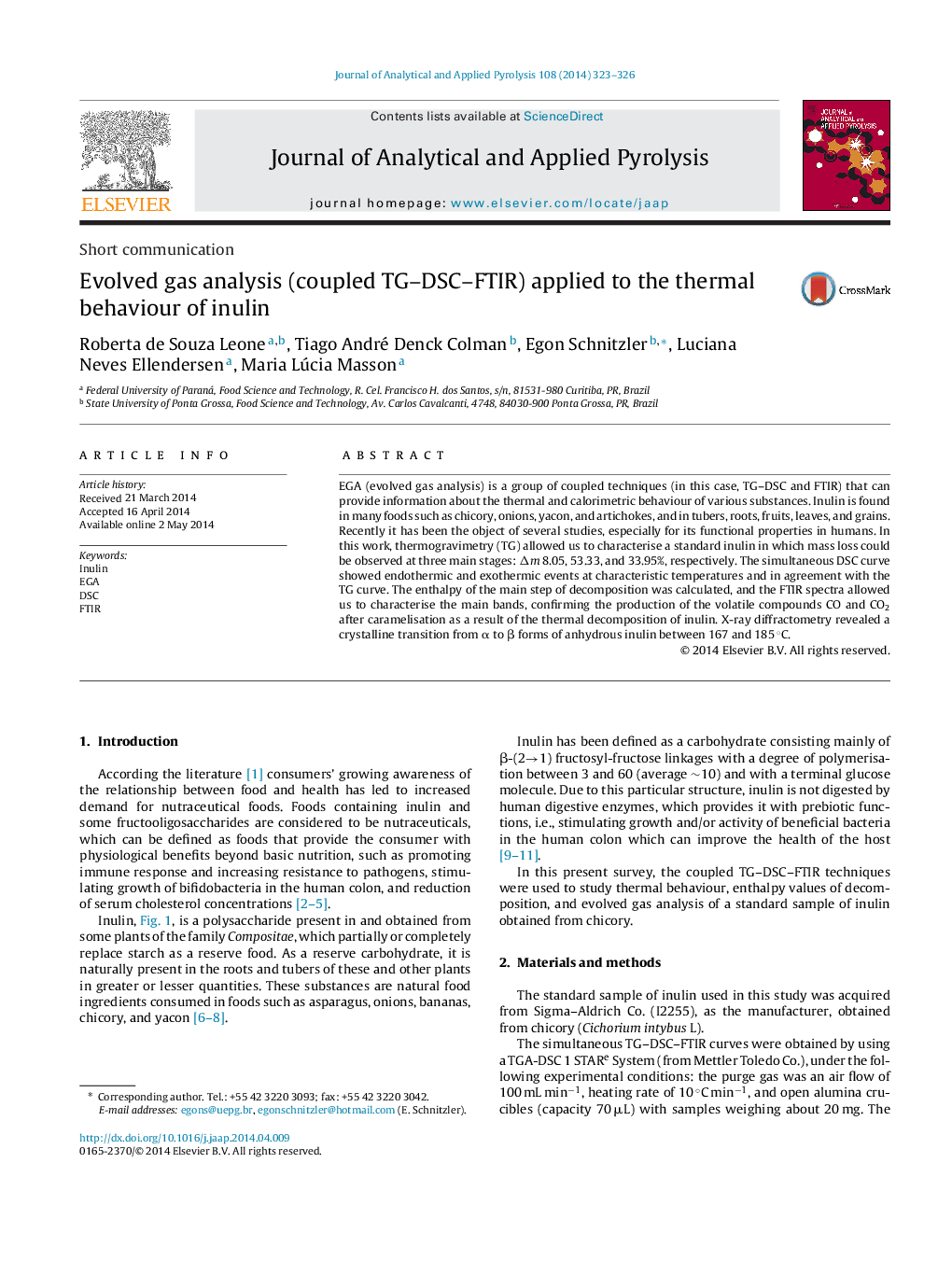| کد مقاله | کد نشریه | سال انتشار | مقاله انگلیسی | نسخه تمام متن |
|---|---|---|---|---|
| 1196691 | 1492969 | 2014 | 4 صفحه PDF | دانلود رایگان |

• Inulin found in several vegetables has been the object of study as prebiotic food.
• Thermal and calorimetric behaviour of inulin was studied and X-ray diffractometry allowed to observe its structural alterations.
• Coupled TG–DSC–FTIR techniques provided information about gaseous products.
EGA (evolved gas analysis) is a group of coupled techniques (in this case, TG–DSC and FTIR) that can provide information about the thermal and calorimetric behaviour of various substances. Inulin is found in many foods such as chicory, onions, yacon, and artichokes, and in tubers, roots, fruits, leaves, and grains. Recently it has been the object of several studies, especially for its functional properties in humans. In this work, thermogravimetry (TG) allowed us to characterise a standard inulin in which mass loss could be observed at three main stages: Δm 8.05, 53.33, and 33.95%, respectively. The simultaneous DSC curve showed endothermic and exothermic events at characteristic temperatures and in agreement with the TG curve. The enthalpy of the main step of decomposition was calculated, and the FTIR spectra allowed us to characterise the main bands, confirming the production of the volatile compounds CO and CO2 after caramelisation as a result of the thermal decomposition of inulin. X-ray diffractometry revealed a crystalline transition from α to β forms of anhydrous inulin between 167 and 185 °C.
Journal: Journal of Analytical and Applied Pyrolysis - Volume 108, July 2014, Pages 323–326